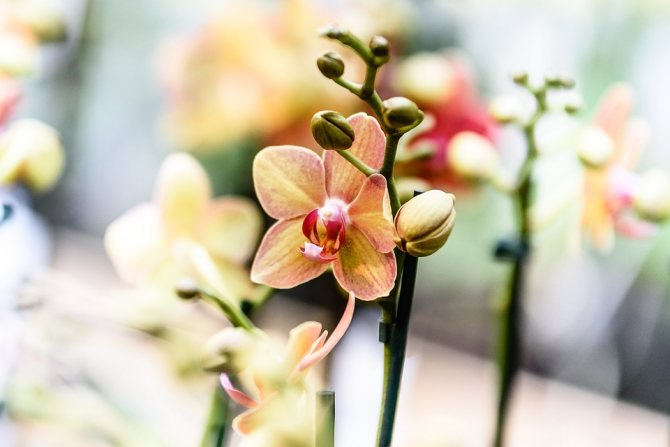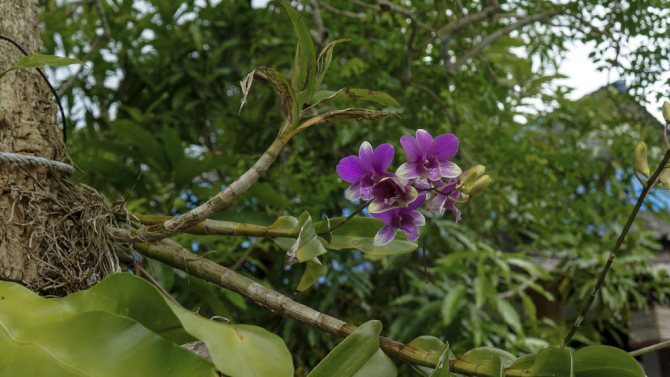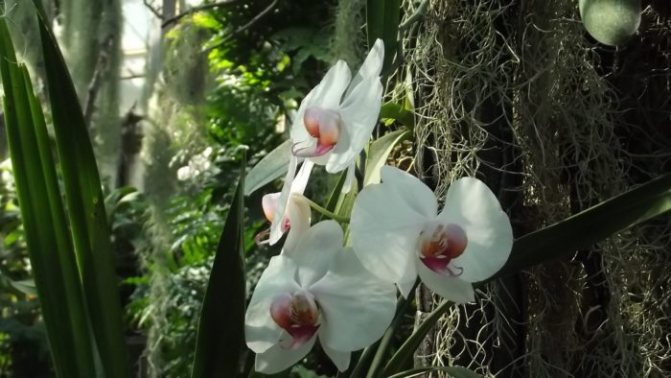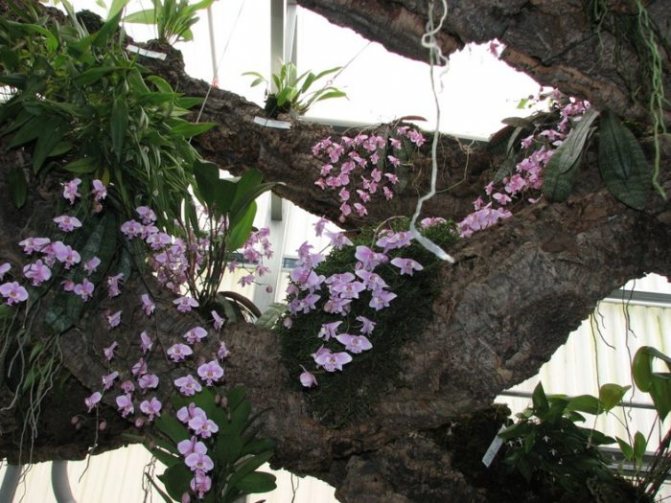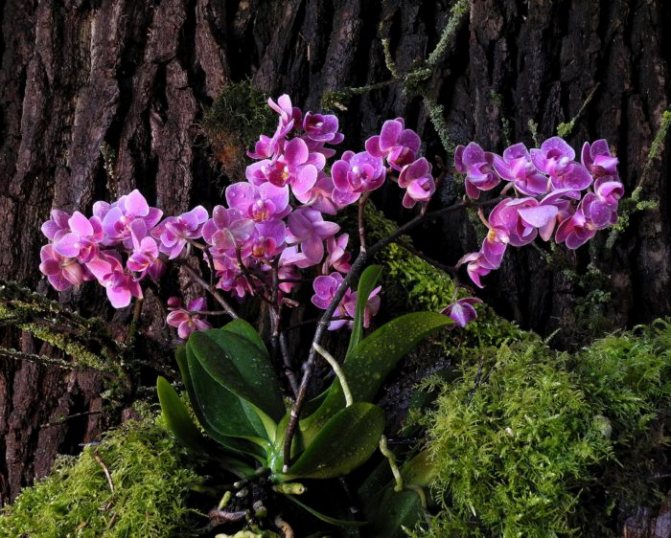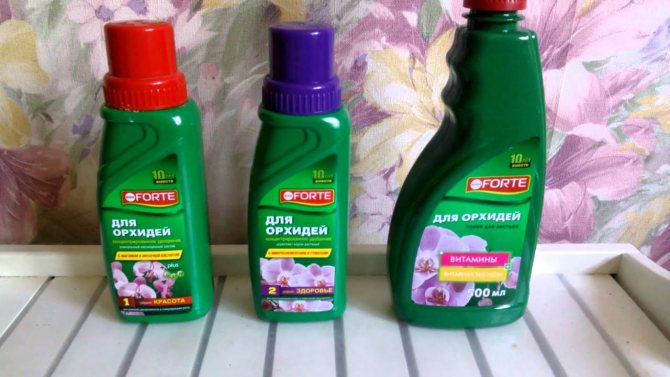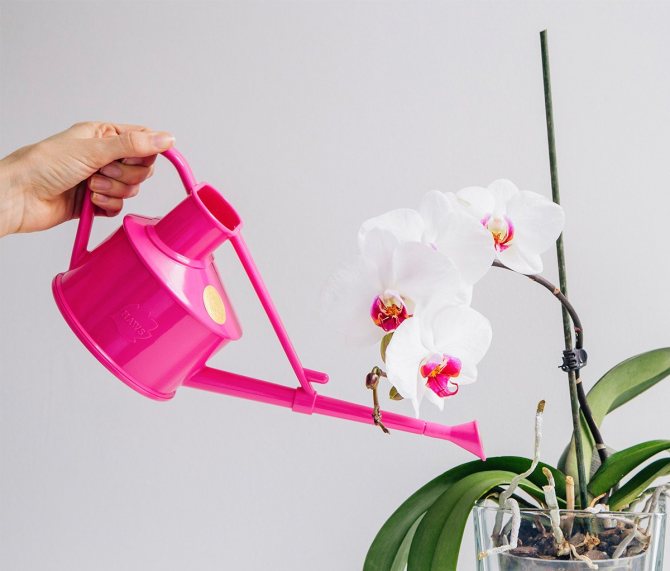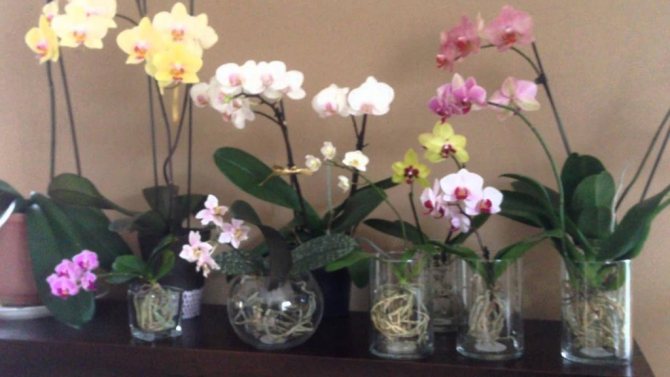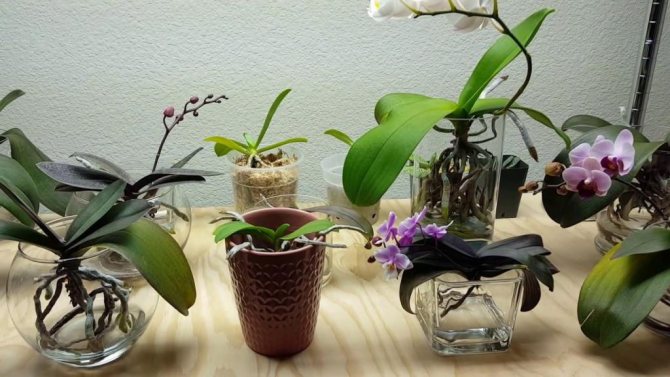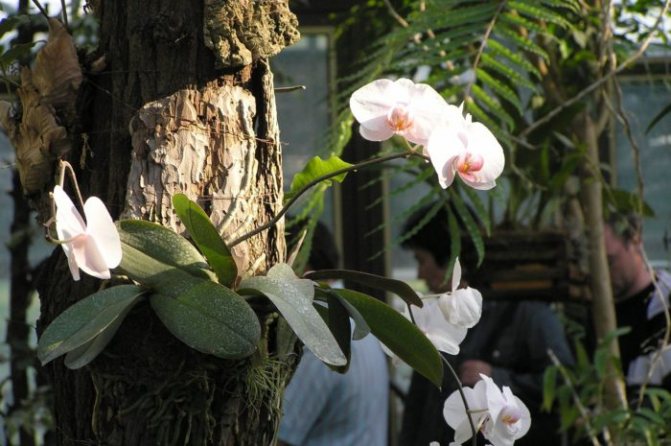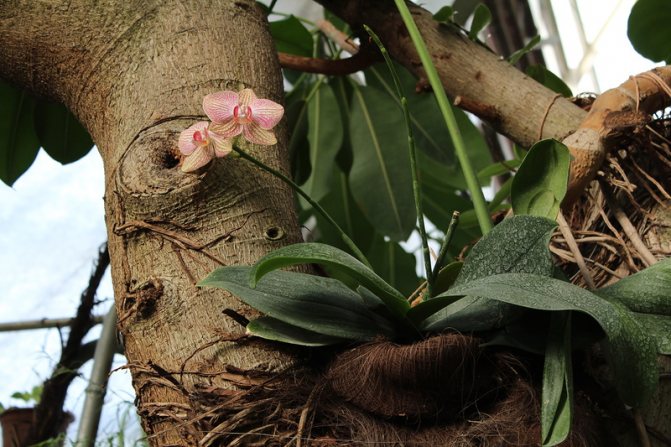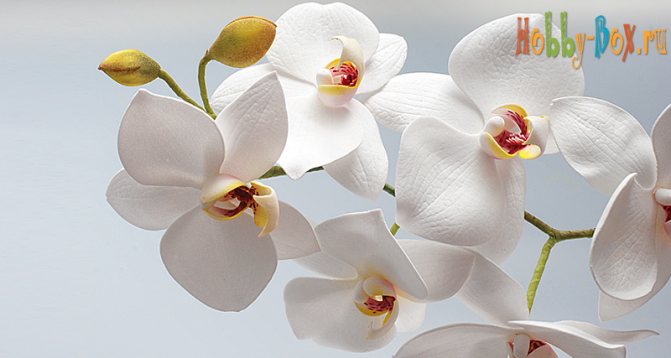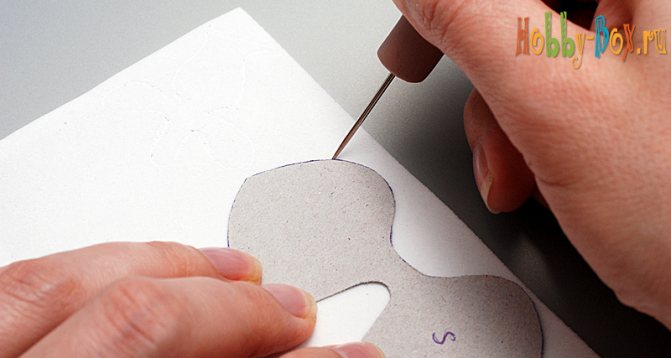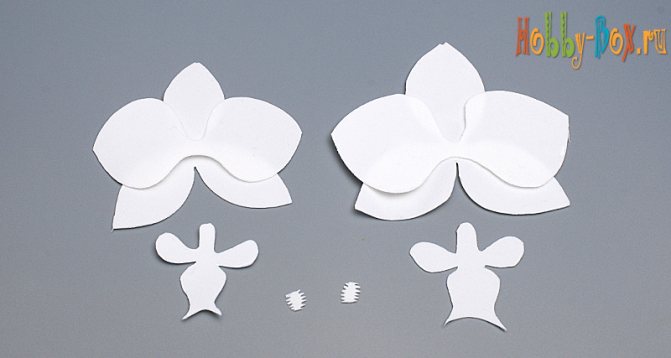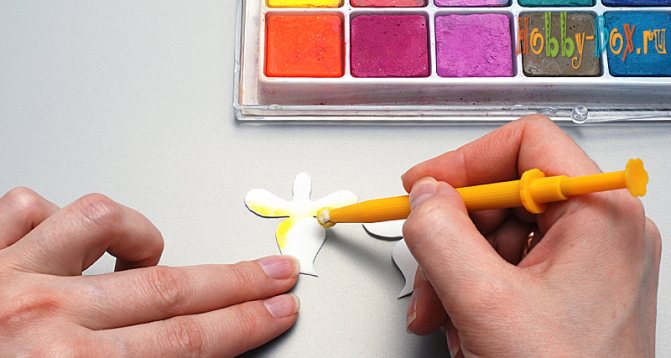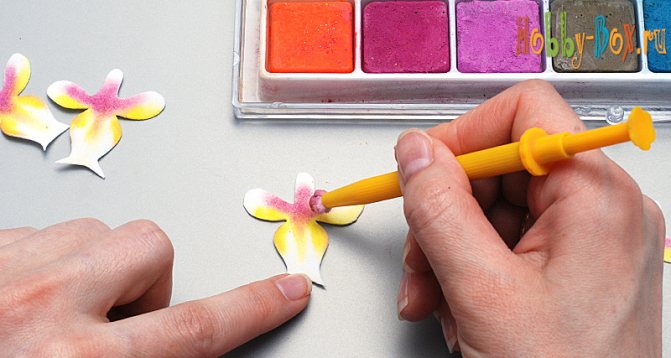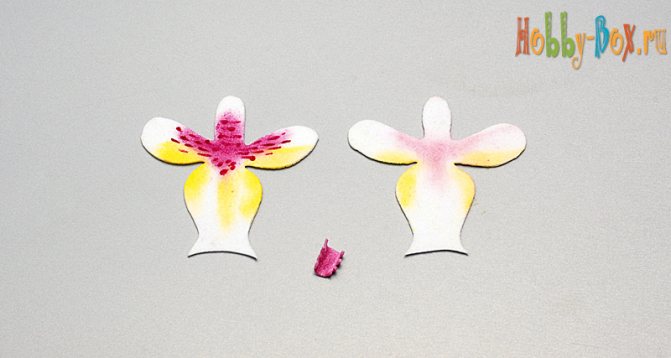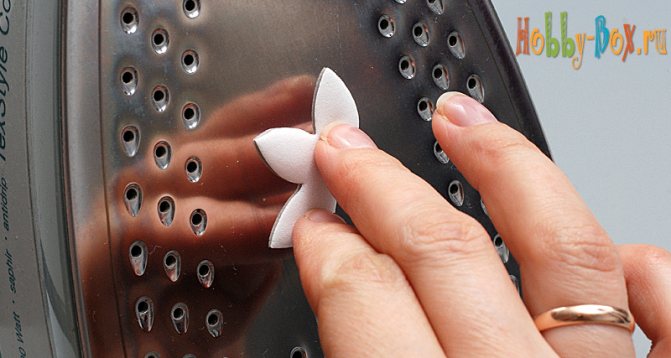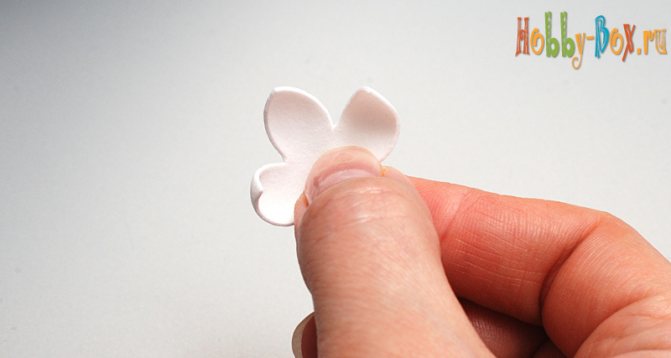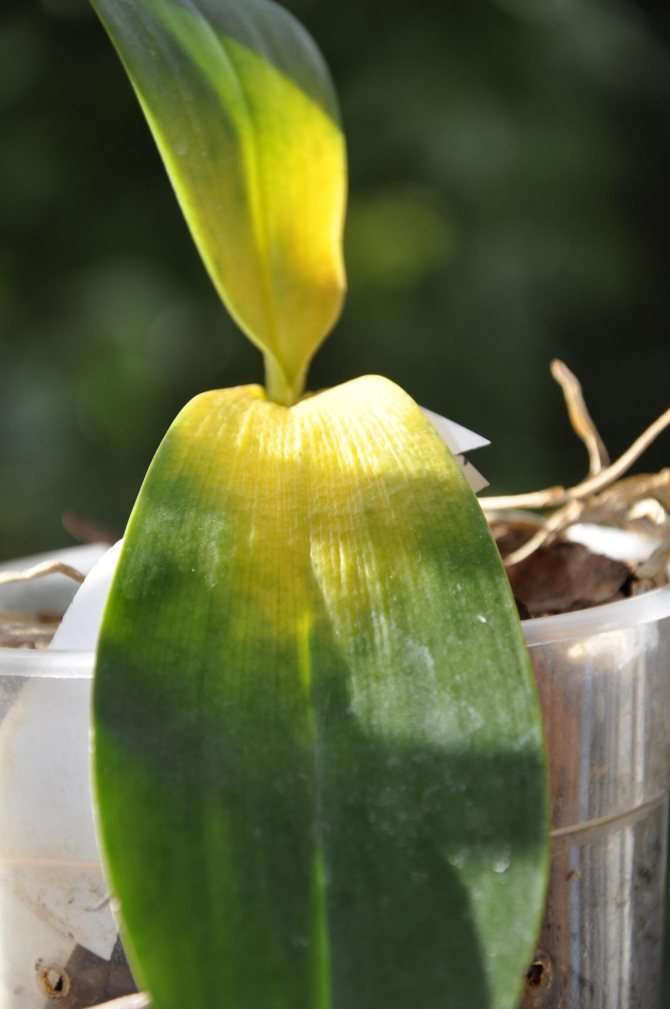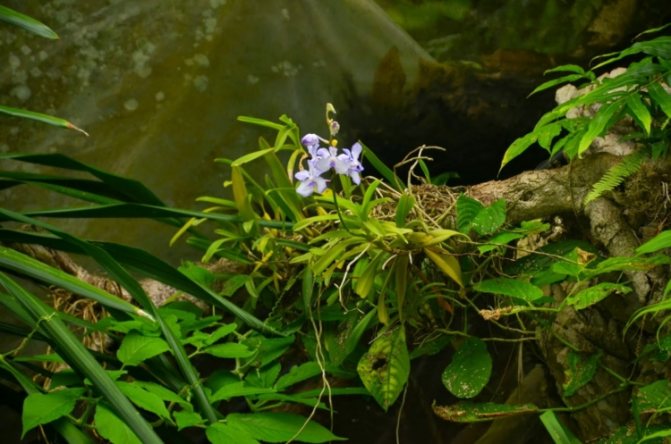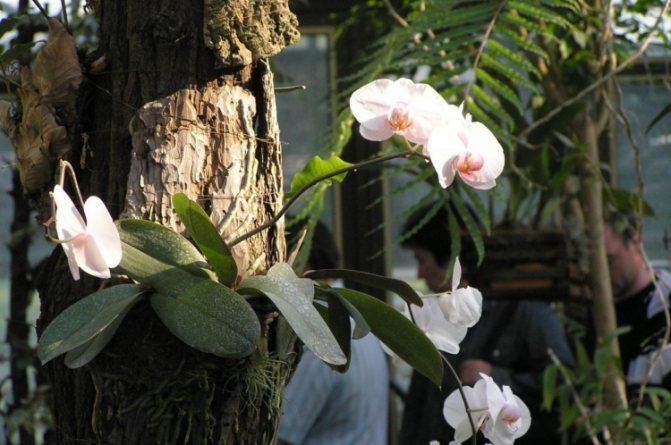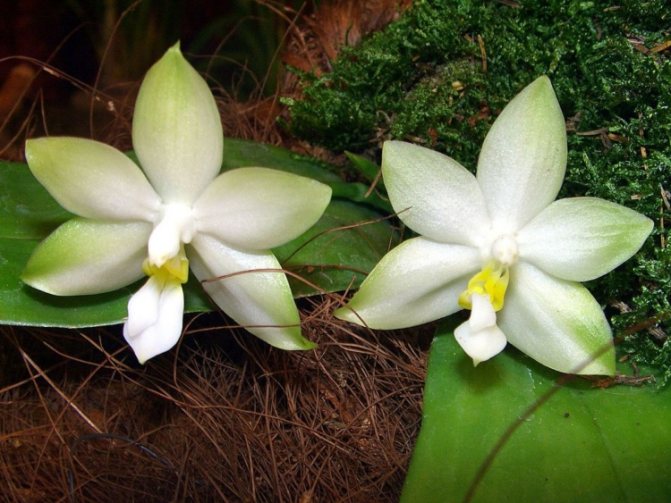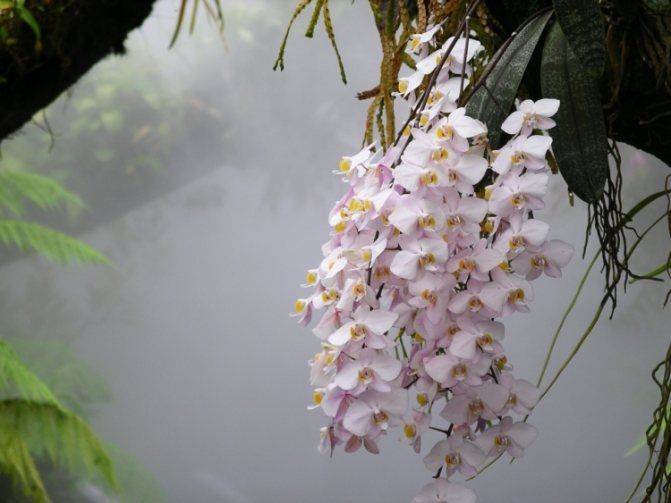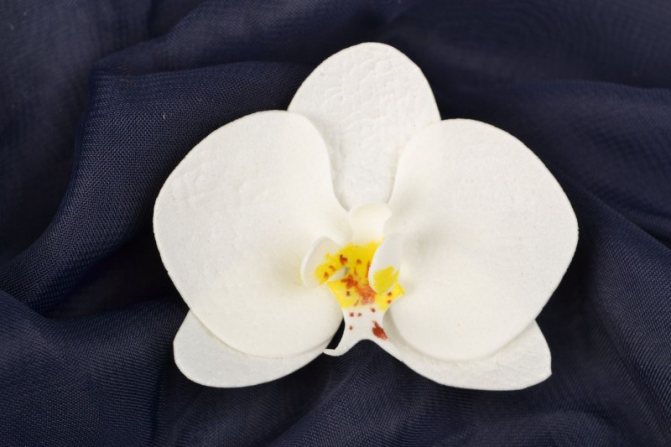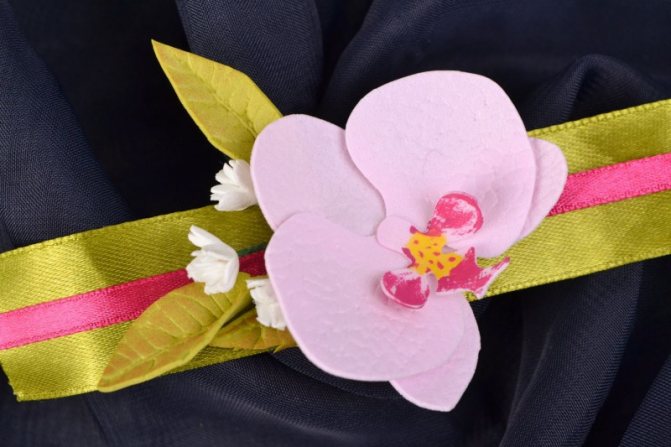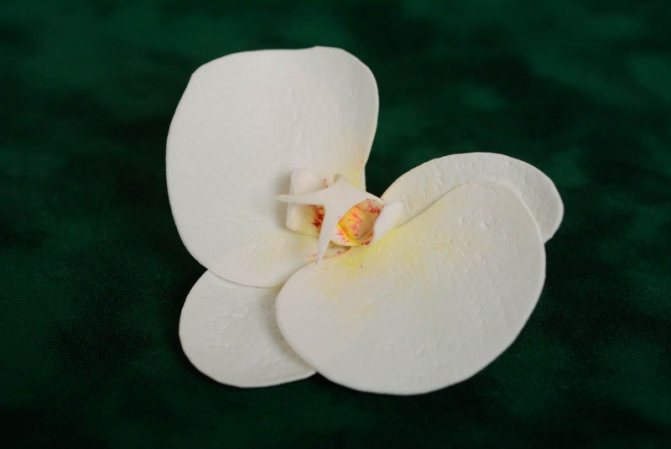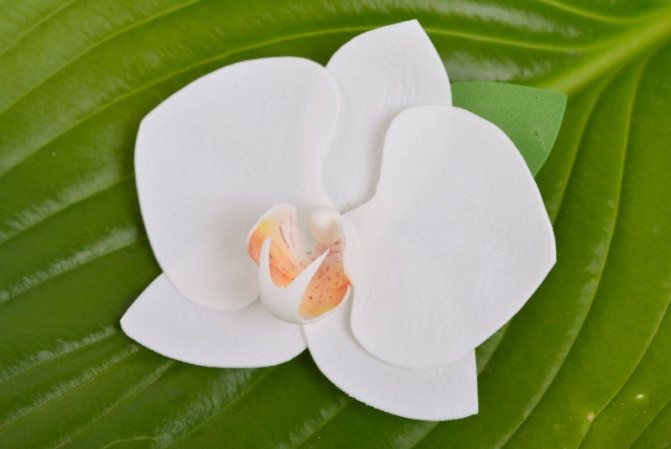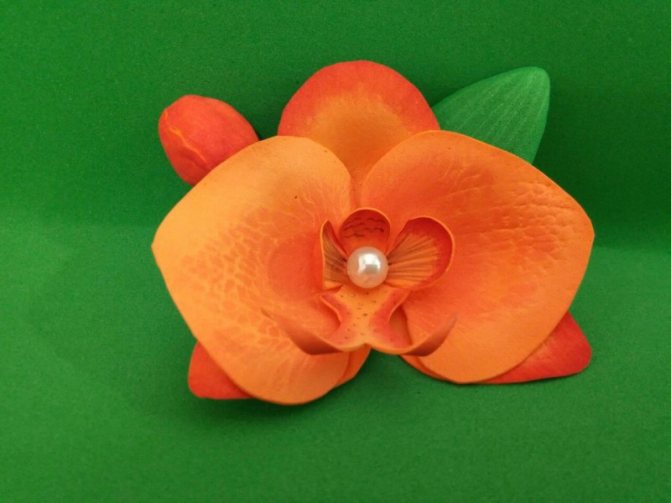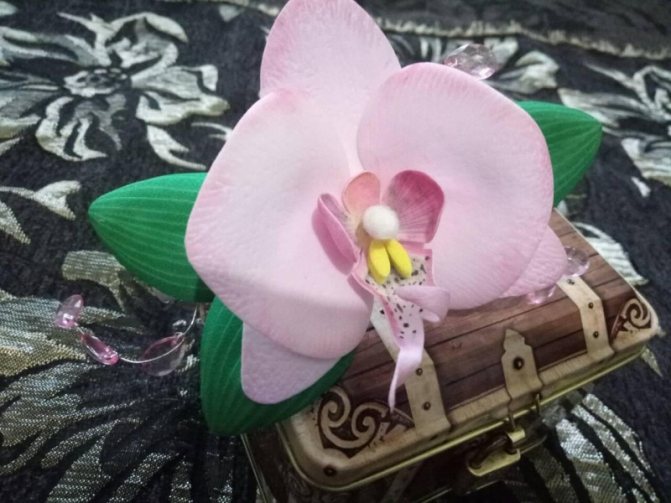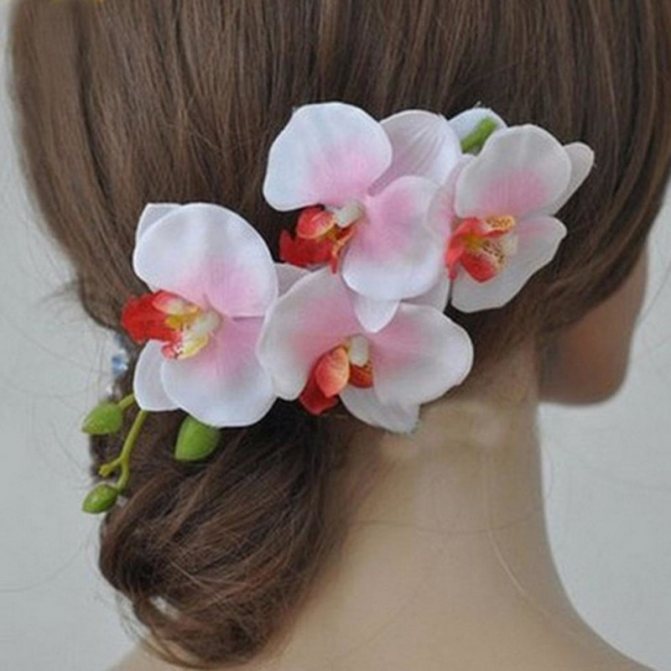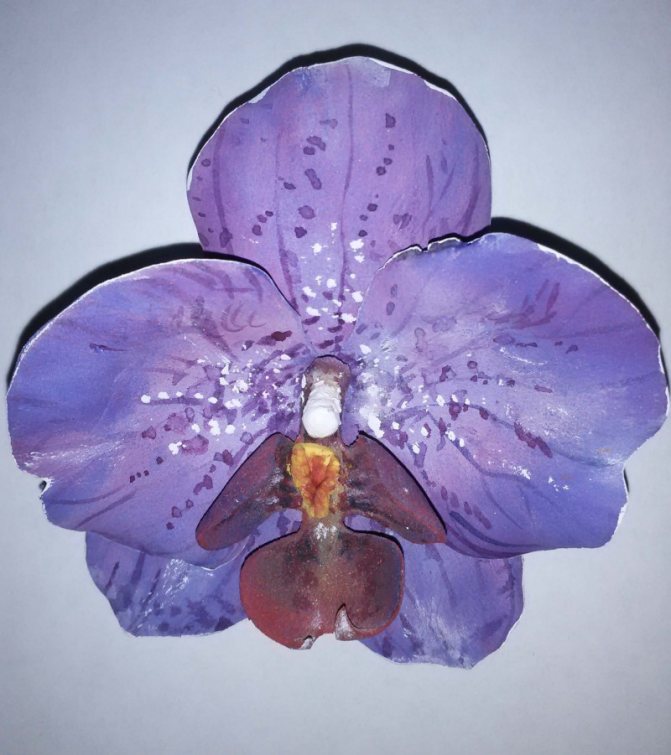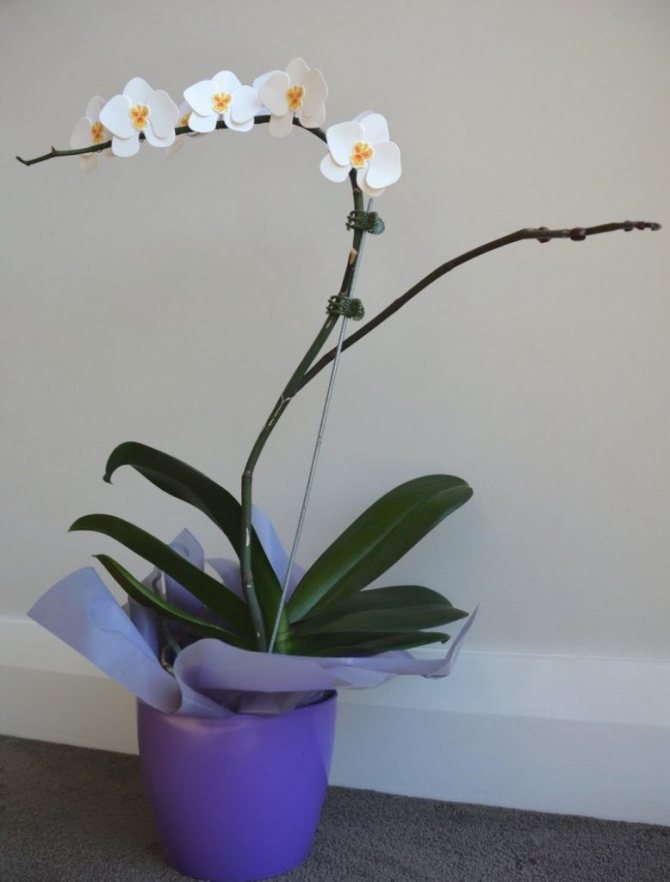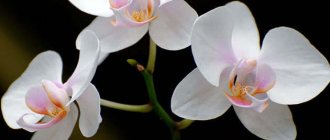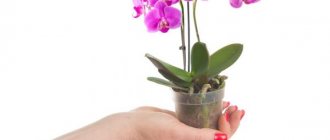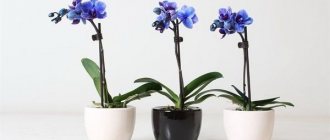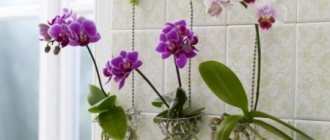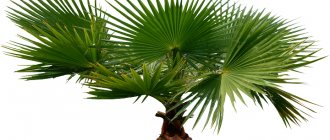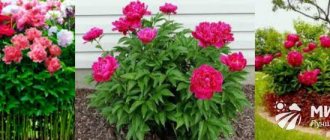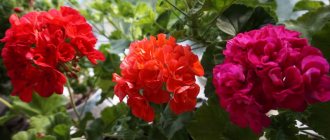Orchids are by far the most widespread species adapted to indoor conditions. Florists make a lot of effort to make their beauties feel good at home. Especially for orchids, they set the temperature regime, regulate the humidity and lighting, and also arrange special watering procedures. All these methods of care are aimed at making the flower feel good, and developing, pleasing the eye with an unusual and long flowering.
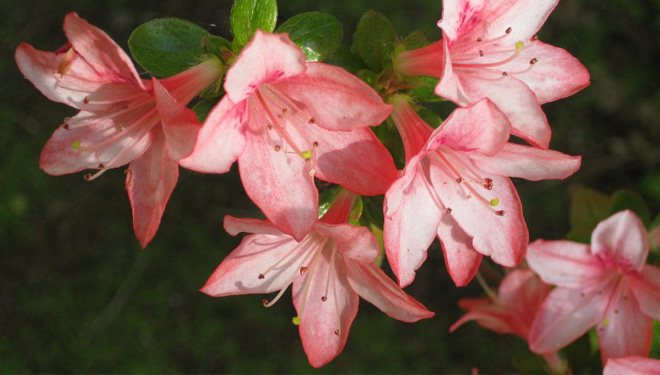
In fact, all these components only repeat the natural habitat conditions habitual for orchids. In this article, we will talk about how orchids grow in nature.
Why is it possible
Epiphytic plants generally don't need soil to feed. One of the few, they are able to adapt to different habitats. Unique roots help them firmly anchor on a rock or trunk of a tropical giant. Extract moisture from the atmosphere and necessary trace elements from natural organic composts.
Outer shell of scout roots - veloman - is able to rebuild its own cellular structure under changing conditions. The air root, encountering an obstacle in nature, stops working only to absorb moisture, tries to catch on, to hold on. The velomen in this area becomes thinner, additional hairs begin to grow on it.
If you put a tropical exotic in an aquatic environment, it will gradually adapt to life in it.
Unusual orchids in nature
Among the orchids there are plants that can not only charm with their attractiveness, but also surprise, and sometimes just stun with a slightly unusual appearance. Their flowers can resemble anyone, but not the traditional and familiar to all of us petals with pistils.
Peristeria high (Peristeria elata)
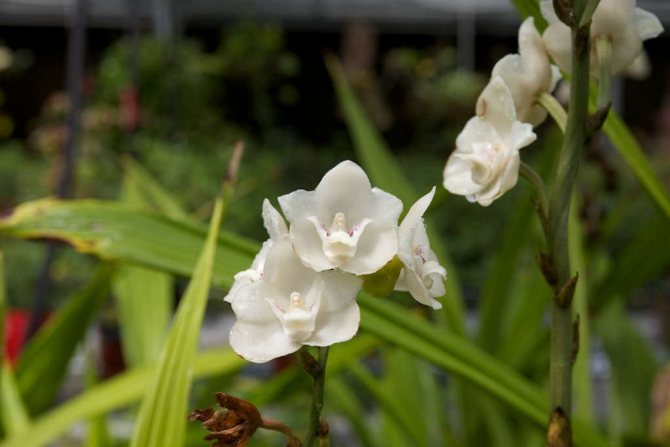

High peristea - orchid-dove or orchid - "holy spirit", the national symbol of the state of Panama. Its flower really resembles a dove with raised wings. It lives in nature on the territory of Central America and slightly captures the northern coast of South America with its range. They say that if a dove orchid blooms, it means that peace and prosperity will come to the house.
Caladenia melanoma (Caladenia melanoma)
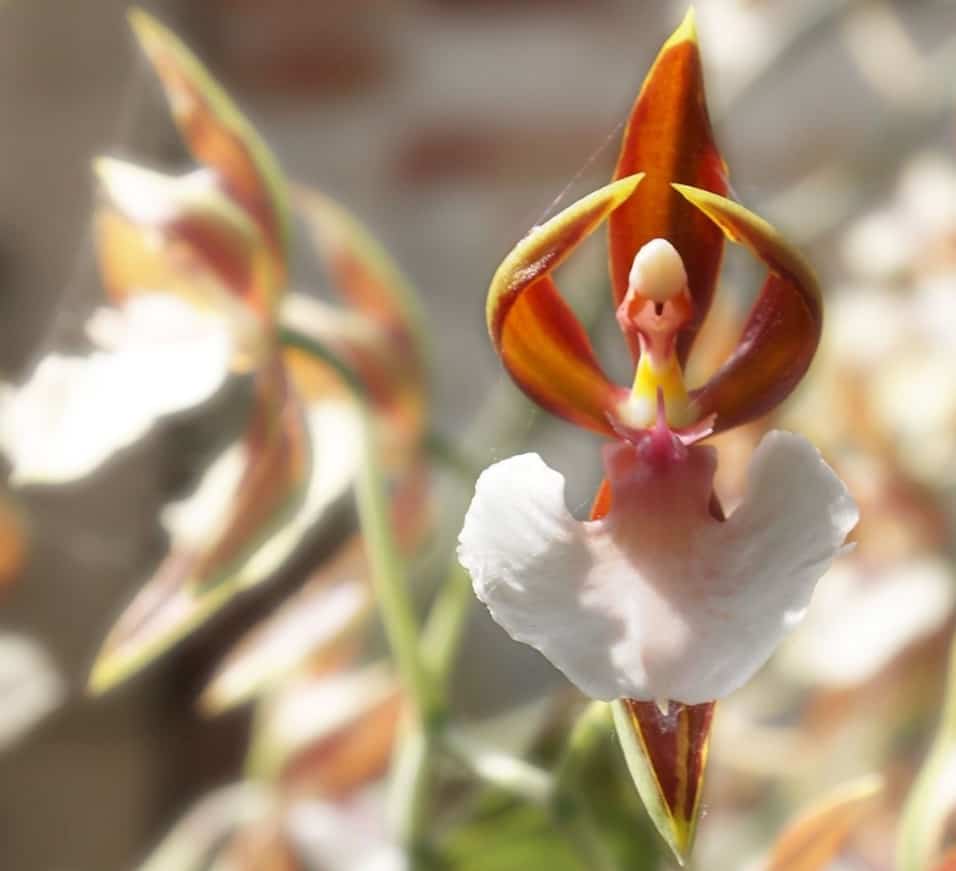

Caladenia melanoma is better known as the ballerina orchid (Ballerina Orchid). A bright representative of the flora of Australia suffers from animals grazing in the meadows and gradually decreases its population, becoming a very rare orchid.
Caleana major
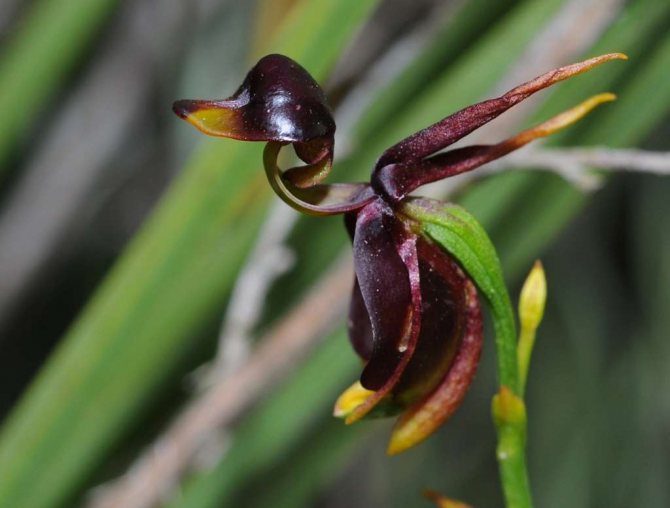

This duck orchid is called the Flying Duck Orchid in English-speaking sources. It is difficult to see it in the grass until it blooms. Her corolla petals are folded in such a way as if before her eyes there really is a silhouette of a bird with a characteristic duck beak. The flower can only be found in nature in the state of Queensland on the Australian continent.
Anguloa uniflora (Anguloa Uniflora)
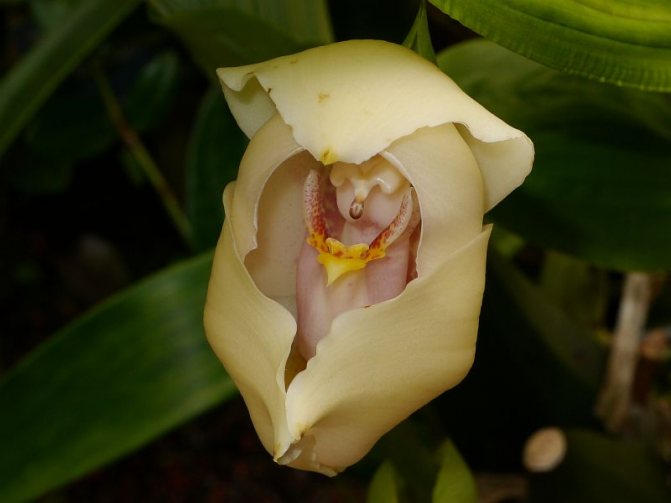

The plant has the popular name Swaddled Babies, which translates as "babies in diapers." This exclusively South American orchid has very touching flowers - like
Habenaria Radiata
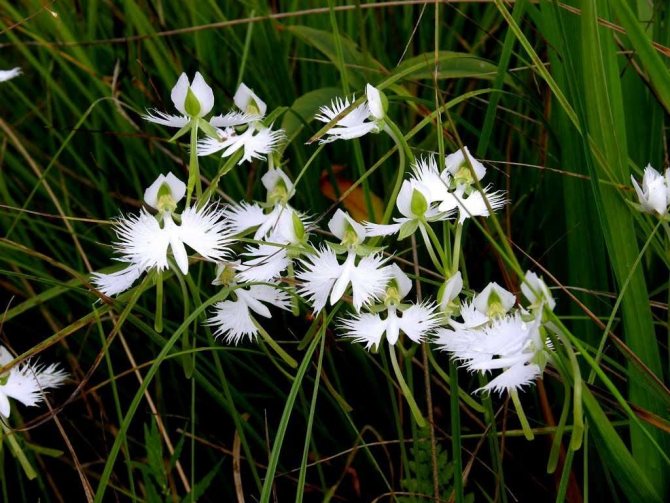

A rare flower native to Japan. It is also called White Egret Orchid, which translates as "white heron orchid". It really is very reminiscent of a bird with snow-white wings soaring in the sky. In culture, it is a very moody plant and is not recommended for beginners.The Hisyo variety is known, which is more adapted to domestic conditions than the natural species.
Habenaria Grandifloriformis (Habenaria Grandifloriformis)
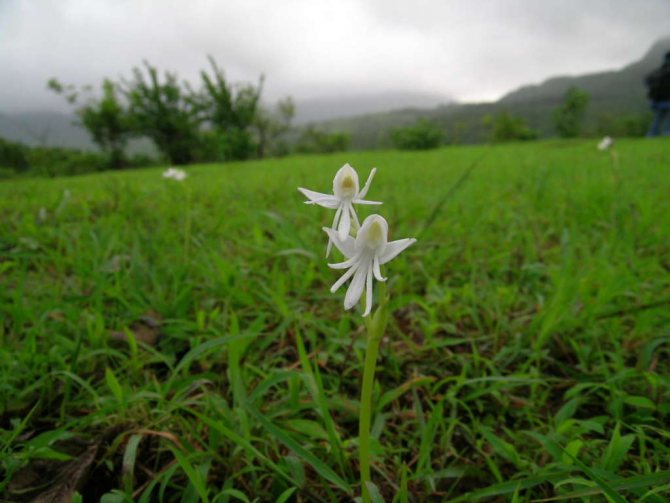

Among flower growers, it is called an angel orchid, since its flower looks like a man in a hood with outstretched wings. In nature, it lives in the southern regions of India.
Monkey Orchid (Dracula simia)
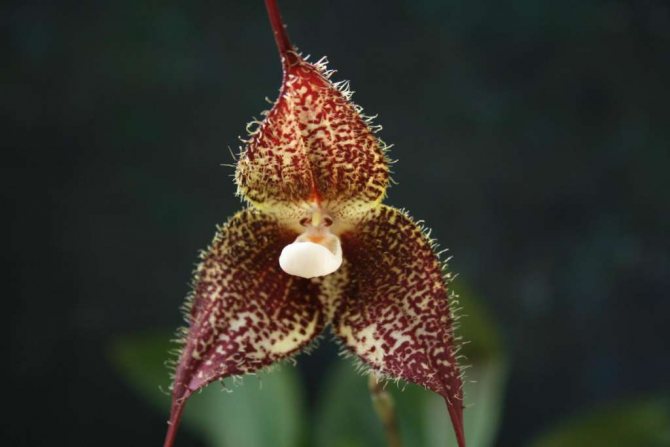

The monkey orchid in the English interpretation is the Monkey Face Orchid. The flowers of the plant are very similar to the face of a monkey, and the spurs look like the fangs of the famous bloodsucker. This cute creation of nature smells like a ripe orange, but in nature it lives in the mountains of Colombia, Ecuador and Peru.
Bee ophrys (Оphrys apifera)
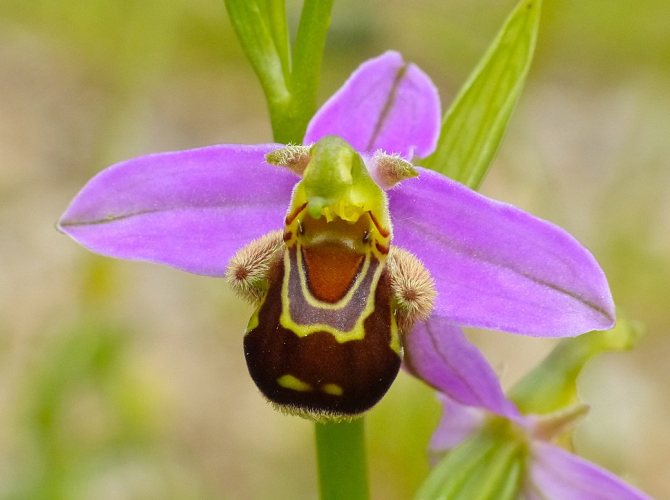

Many representatives of the Ophris clan have flowers that look like some kind of grimacing faces from a distance. This species actually resembles a bumblebee, but the color of the petals at the base and lip folds into a charming smiling mouth. So the laughing bumblebee orchid has turned out.
Ophrys bombyliflora
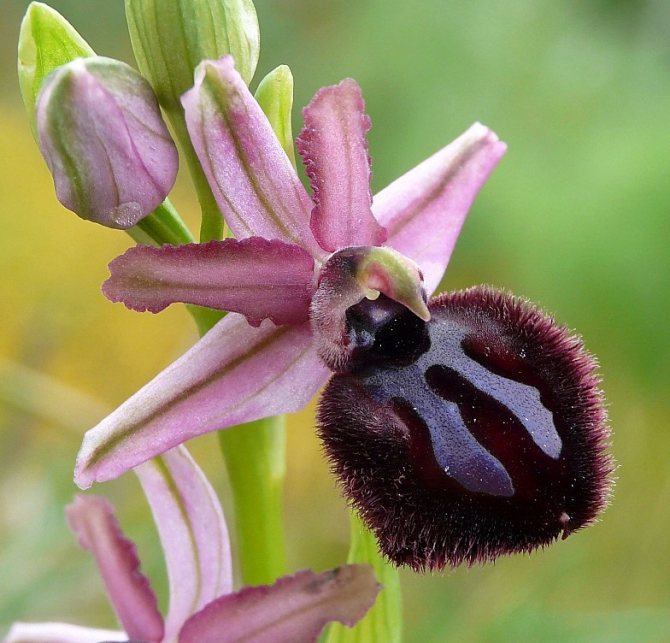

From afar, the brown pubescent flower of the plant looks like an exotic spider, tucking its legs and sitting on top of a rosette of leaves on a peduncle blade. Without a doubt, the spider orchid deservedly received its popular name.
Italian orchis (Orchis italica)
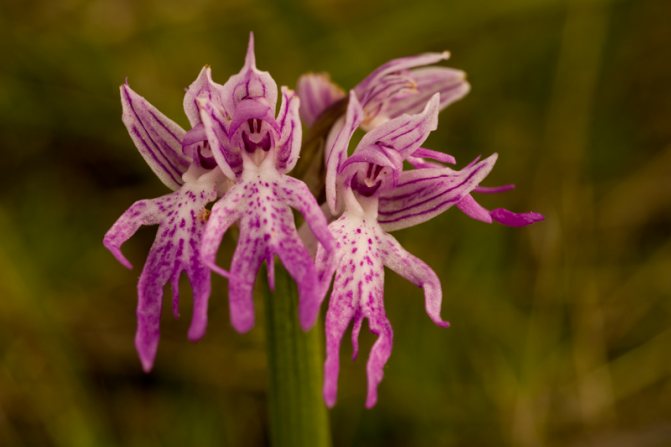

In English-speaking countries, this plant is called "naked man orchid", in translation - "naked man orchid." In the genus Yatryshniks there are many interesting species that have adapted to the temperate climate of Eurasia and North America, many live in the mountains of the Caucasus and Crimea.
Risantella Gardner (Rhizanthella gardneri)
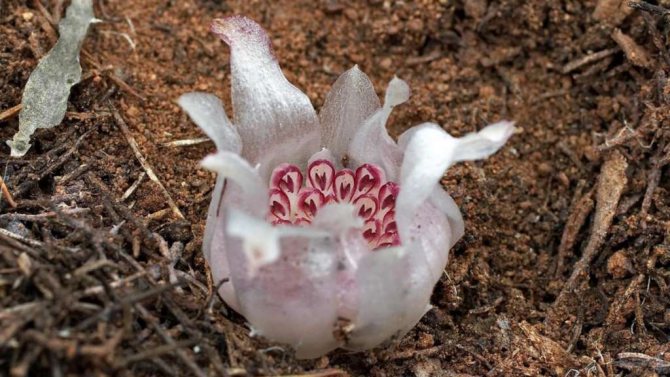

Risantella Gardner is an underground orchid native to Australia. If it were not for the aroma, people would have remained in the dark for a long time that such a unique plant exists in nature.
Significant pluses
In artificially created conditions, cultivation without soil mixtures has many advantages:
- maintenance costs are significantly reduced;
- there is no need for transplanting;
- a little moisture is enough to maintain growth;
- when spraying, there are no stagnation phenomena;
- drying out of the root system is excluded;
- the risk of infection by fungi and rot is reduced;
- in general, the content is greatly facilitated.
Water system well tolerated unpretentious phalaenopsis (Phalaenopsis), maxillaria (Maxillaria), dendrobiums (Dendrobium) - as resuscitation and for permanent maintenance.
But not all orchids take this method painlessly. It all depends on the actual climatic conditions - temperature, humidity. You will have to wait 3 to 6 months to see the results and decide if it is suitable for this particular climate or not.
There are no uniform rules for the cultivation of orchids in water conditions. All varieties behave differently, each species requires an individual attitude. General the same recommendation are as follows:
- Only the roots touch the liquid phase (the height of the column is 2-3 cm from the bottom). The neck, stem and bulb should be above its surface.
- If they are of different lengths or are located too high, you need to pour it so that the longest spine plunges 2-3 cm.
- It is necessary to top up as the liquid evaporates or is absorbed, but always to the same height.
- The liquid should be changed as it becomes cloudy. At the very beginning, you may have to do this more often due to the decaying veloman.
- It is not necessary to remove the green healthy strands left after cleaning the root. Even without the top shell, they feed the plant.
- In no case should you raise the level to the young roots - they will gradually descend into it themselves. The anticipation of events is fraught with the beginning of decay. The maturity of the velomen is determined by the characteristic darkening and compaction of the part that has sunk into the aquatic environment.
- To stimulate flowering (as in the traditional version), it is imperative to use complex fertilizers. In summer - at least once 5-7 days, in winter - reduce to a minimum, since the growth process slows down at this time. Top dressing is especially relevant in the off-season.
For reference! If this is a reanimated orchid, you need to fill it without bringing it to the neck 1 cm. Or, first build up the roots in the moss.
General description and origin
Orchids are considered one of the most ancient plants on our planet. Scientists have confirmed that they existed in the Late Cretaceous era. They first appeared about 30 million years ago. Although their pollen has been found in rocks that are 80 million years old.
Millions of years have been spent in the evolution and interaction of orchids and pollinators. During the period when flowering plants dominated the planet, orchids, in order to survive, lured insects away from the oldest angiosperms.
These plants belong to the Orchid family, to the Flowering department, and their class is Monocotyledonous. According to a more detailed classification, these flowers are ranked in the order of the Asparagus.
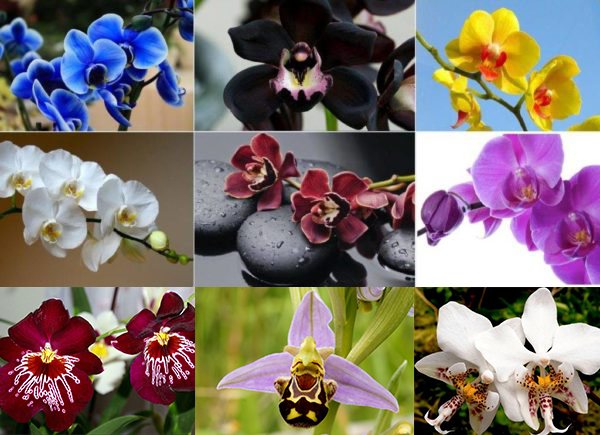

Externally, orchids can have the most varied appearance, which depends on the growing conditions. These plants are characterized by a unique color and shape of petals, perianth and spur. In these flowers, one of the lower petals ("lip") is a kind of "landing site" for pollinators.
These flowers belong to centenarians. On average, these flowers live for about 60–80 years. Some specimens survived for over a century.
Translation: what you need to know
Plants are gradually transferred to the open system. At this time, they should not bloom, release flower stalks. Main steps transplants:
- release from the bark (should be carefully peeled and rinsed);
- introduction to the mode "2 days in the aquatic environment - 1 day of drying" during the first week;
- lengthening the water gap up to 5 days with 1-2 "dry" days (second week);
- after a month - constant maintenance with a weekly change of liquid and rinsing the pot.
At this time, you need to very carefully monitor the reaction and well-being. Some of them require a longer drying time, such as Cattleya. A silvery color will indicate the need for moisture replenishment. Sometimes mold appears on the root system. It can be removed with a cotton swab moistened with fungicide or hydrogen peroxide. Can be sprayed from a spray bottle.
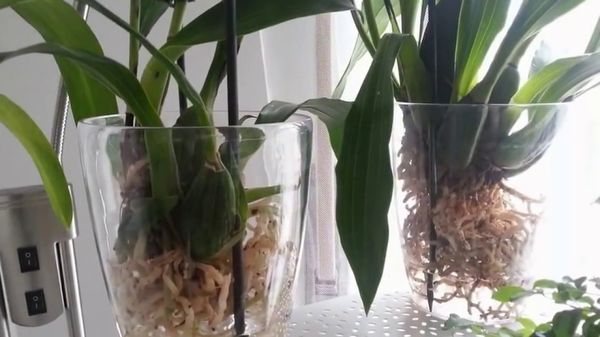

To make the experiment as successful as possible, without sad consequences experienced florists advise:
- try the technique in spring or early summer, when the flowers are active and the results will be faster and more obvious;
- in the warm season, exclude stimulation in the form of drying;
- if the transplantation took place during the period of suspended animation (in winter or autumn), you can pour the plant to the base of the neck for about a day, and then leave it in an empty flowerpot for a day or two;
- when immersed after drying, add a little peroxide - to saturate the liquid with oxygen and prevent rot;
- to find a favorable place for keeping in the aquatic environment - sufficiently illuminated, warm (20-23C, humidity 60-75%); cool window sills with drafts in this case will not work.
Water must be softened - rain, thawed, boiled, settled. You can filter it with peat. It is very important to take care of the leaves - to clean them of dust and dirt. With the help of this organ, orchids breathe, maintain moisture balance, and accumulate food. The leaf is, among other things, an indicator of health. Sometimes a yellowing or stain detected in time helps to save the pet.
Note! According to experts, velomen radically changes its cellular structure. So much so that the entire system dries up and dies if you plant it in a substrate.In order for it to take root in a closed soil system, it is necessary that most of it is not "watery".
For many connoisseurs, the sight of an exotic plant in a "glass" does not give aesthetic pleasure, it seems to be something temporary, unfinished. Very important moments disappear from the care system: the joy of interaction, aesthetic pleasure from the structure of the soil and the beauty of flowerpots. Conservative owners reject incomprehensible trends, remain loyal to a closed system. And everyone, no doubt, has the right to follow their own preferences.
Orchid history
The origin of the orchid is shrouded in legends. According to one ancient myth, this flower emerged from the particles of a split rainbow. Another legend claims that orchids began to grow where the beautiful Aphrodite lost her sandal. Whether these legends are true is unclear. But the orchid family aroused interest in people at different times and eras.
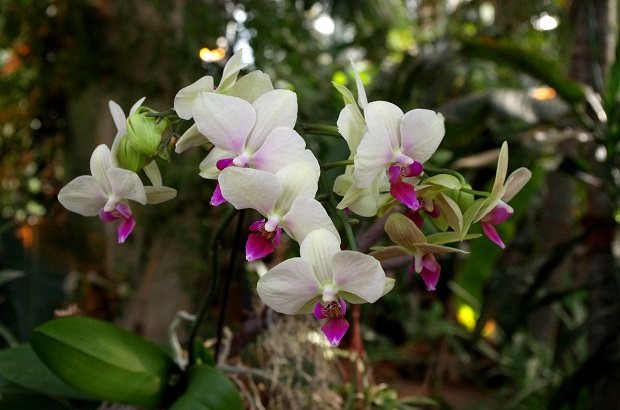

Exotic plants got their name as beautiful as from a picture back in Ancient Greece. Plato's student Theophrastus, as a result of his scientific searches, discovered a flower unfamiliar to him. The plant had a thickening of the root, in appearance resembling a paired onion. Since then, the name "orchis" (from the Greek "testicle") has been firmly stuck to the flower.
Living in the 1st century AD the scientist Dioscridus gave a description of the orchid in his writings. According to him, the Mexican Aztecs knew this flower. They used exotic plants to create drinks.
Many centuries later, an English gardener named Cattley introduced the orchid to Europeans. He planted a mysterious plant in a pot and watched fragrant flowers form on its shoots. In memory of the curious gardener, the orchid genus Cattleya was named.
Spread
Phalaenopsis is native to Southeast Asia. A large number of species are native to the Philippines and northeastern Australia. It is believed that the genus originated in southern China and then spread to other parts of the world.
The first to discover the flower was the German naturalist Georg Rumph, on an island called Ambon in Indonesia. This plant became a sensation only after it came to the famous scientist Karl Linnaeus. It was he who described this flower in his work "Types of Plants", and called it "adorable epidendrum", which translates as "living on a tree."
Hydroponic technology
Hydroponics (with the use of nutrient solutions) as a method of growing plants originated more than 200 years ago. Landscape designers use its principles to equip roof gardens, vertically arranged ever-blooming flower beds. Gardeners appreciate it for its compact greenhouse equipment and high crop yields.
Hydroponic techniques are also attracting more and more orchid growers. The fact that you do not need to give up mixtures-substrates, which are so cherished by lovers of traditions. And at the same time, the virtues of open systems are preserved. Care in this case consists in the regular addition of a nutrient mixture and monitoring the condition of the flowers.
Basic principles and merits
The technology helps to successfully cultivate any crops - from exotic plants to various mosses. With its help, rooting of cuttings, germination of seeds is ensured.
The fundamental principle is to adapt to the needs of the plant. The root system is placed directly in the solution or in a porous inert base as a fixing support. Moisture is enriched with oxygen, micro- and macroelements (in an easily assimilated form in certain proportions). Circulating through the capillaries, it irrigates and nourishes them.
Important! The method is not suitable for tuberous crops. At high humidity or temperature, rotting can begin in the tubers.
Many negative factors that are inherent in cultivation in the ground, which contain harmful elements and there is a risk of infection with microorganisms, are excluded. The inert base guarantees the absence of any pests.Consequently, there is no need for treatment with pesticides. The root in such favorable conditions is healthier and more developed.
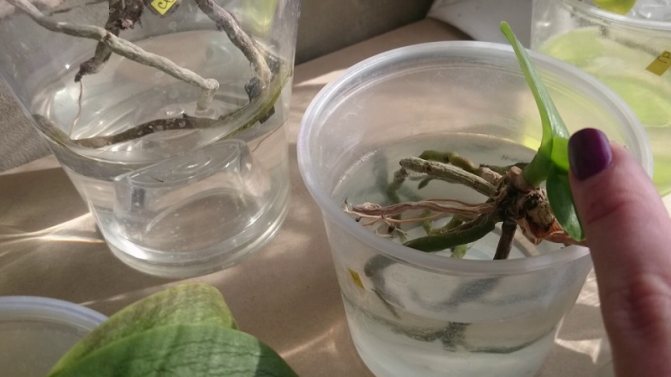

Having received everything it needs, the plant redirects its forces to the growth of the above-water part. The optimal balance of supplements is made possible by precise dosage. In gratitude, decorative pets bloom profusely and for a long time.
The economy of the technique is no less important. The cost of purchasing soil is reduced, which now serve 3-4 times longer. Abundant watering is replaced by adding liquid several times a month. In this case, only half the rate is required. In winter, the normal height of the liquid may not exceed 1 cm, in summer - about 4. The spent composition does not merge - it can be watered with other flowers.
Device
Hydroponic systems from different manufacturers are offered for amateur crop production. They have already optimally adjusted the pH of the environment, oxygen saturation. The installation works almost autonomously after just one adjustment. The problem of adding water is solved by installing a submersible pump with a timer or a circulation system with an aerator. Caring for a plant with professional equipment becomes a pleasure.
Advice! To obtain a slightly acidic reaction and "softness" at home, ordinary water can be passed through a membrane filter, frozen or mixed with distilled water. Temporary hardness can be reduced by boiling.
You can make a similar system yourself using pots from a flower shop. For example, transparent plastic or ceramic, if there is a concern that glass vases will cool the roots too much. Plastic can be "hidden" in decorative, stable pots, preferably not allowing light to pass through. Minimal exposure to sunlight will exclude "blooming". The walls and bottom of the inner tank are provided with holes with a diameter of no more than 6 mm for supplying food and oxygen.
Substrate mixtures
Non-degradable mineral components are used as substrate bases for orchids: expanded clay, perlite, zeolite or green mix. All of them are porous, have high capillary conductivity, and are chemically inactive. If used correctly, they can last from 6 to 10 years without replacement.
- Expanded clay pellets - porous clay, fired at 1200C, in the form of round and irregular granules. It is not water-intensive, therefore it must be constantly moisturized so that the root system does not dry out. Suitable for hydroponic systems where frequent watering is required. Scattered on the surface, it promotes less evaporation, protects against mold. Works up to 6 years, then begins to decompose. Over time, salts appear on the pellets due to constant watering and spraying. In this case, as well as before the first use, it must be thoroughly rinsed.
- Perlite - natural eco-friendly material, safe for flowers. It becomes super light after industrial swelling. It stores heat well, smooths out temperature fluctuations, does not allow freezing. It perfectly absorbs all the components, then gradually, smoothly releases them. Just like clay, it is not subject to decomposition by bacteria and fungi. Excellent for rooting, increases their aeration.
Important! Perlite (foamed glass) contains dust that is harmful to human lungs. When working with him, it is better to wear a respirator. After purchase, pour, mix, then drain the fine fraction.
- Zeolite (diatomaceous earth, diatomite) - solid porous aluminosilicate. When watering is characterized by "hiss". It is used in aquaristics and for industrial water treatment. For orchids, only magmatic zeolite is suitable, which does not dissolve in liquid, does not form lumps and does not contain any additives. Like perlite, it protects plants from stressful temperature changes.
- Combination mineral wool two types (moisture-absorbing and water-repellent) with the addition of an aerating element - perlite. Suitable for those who prefer coolness (like dendrobium). Greenmix-complex, on the one hand, cools the root system and excludes rotting, on the other hand, it prevents drying out and increases moisture around the plant.
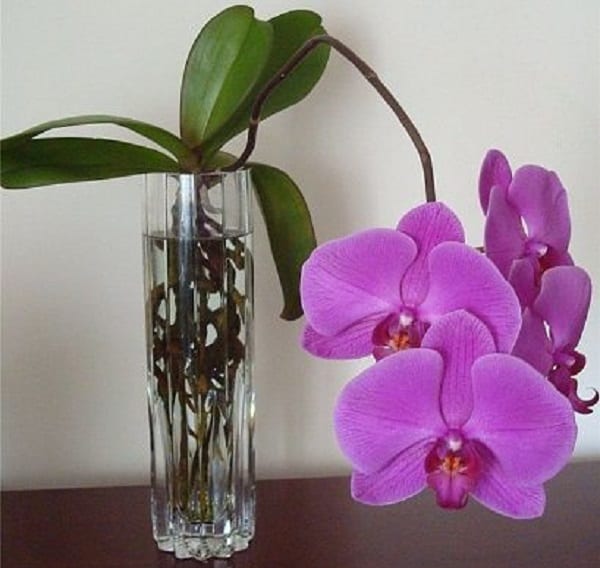

Professional flower growers often mix different types of substrate additives in arbitrary proportions. Thus, they get their own version, suitable for the climate and the specific plant.
Growing places
Orchids are quite hardy flowers. They easily adapt to any climatic zone. These plants live both in arid and hot climates and in cold regions of our planet. Representatives of this species cannot be found except in Antarctica. However, the greatest variety of orchids is found in tropical forests. Here there are the best growing conditions for them:
- high humidity;
- excellent air circulation;
- protection of plants from the scorching rays of the sun.
In tropical climates, epiphytic species grow most often. In temperate latitudes, herbaceous terrestrial perennial species usually grow. Both tuberous and rhizome varieties are found here. Orchids are less common in temperate climates than in tropical countries. Moreover, in the Northern Hemisphere in such a climate, about 75 genera grow, and in similar conditions in the Southern Hemisphere - 40 genera. In the CIS countries, there are about 49 genera.
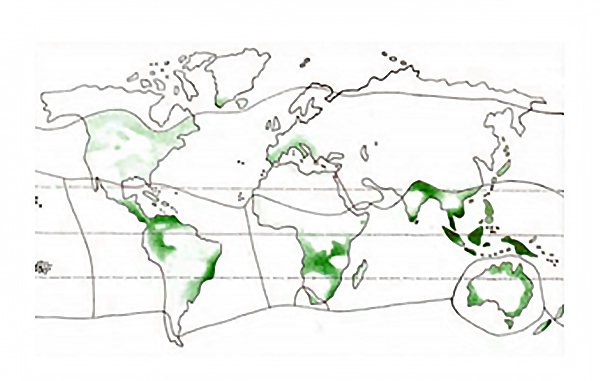

Scientists have conditionally divided these flowers into the following climatic regions:
- the coast of Africa, as well as South and Central America and areas located on the same parallel. In this region, epiphytic varieties prefer to grow, but other species are also found;
- mountains of Brazil and New Guinea, as well as the Andes. This group includes Indonesia along with Malaysia. Any Orchid may meet in these areas;
- steppe and plateau. For flowers, these are not the most favorable conditions. Epiphytic and terrestrial species most often develop here; regions with a temperate climate. Only terrestrial species grow in these areas.
As you can see, orchids are found in various climatic zones almost all over the planet.
Things to Remember
Orchid beauties pick up the substances they need with different intensities depending on the season and life cycle. Over time, the proportions of nutritional components change. In summer it is necessary to change it every month, in winter it is enough to do this once every one and a half to two months. The substrate soil mixture can be rinsed under the shower before replacing. This removes deposits and organic residues.
In addition, it is extremely important to control the pH level with a test. Plants feel best in a slightly acidic environment with an optimal value of 5.5-6.5. Its abrupt change negatively affects the ability to absorb food and growth.
Photo
In the photo you can see where these flowers grow in wildlife, how they look in trees and in other habitats.
Foamiran experiments
Charming orchid flowers made of soft, plastic foamiran look very beautiful. This material is more voluminous, easily stretches when heated, and products from it are very "real" and textured.
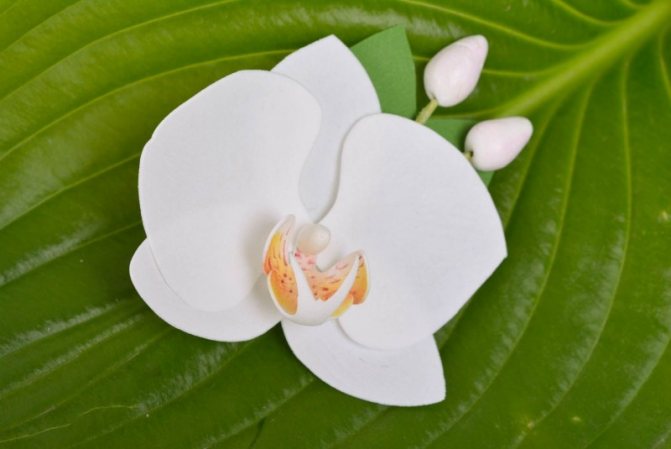

Correctly selected colors, a little perseverance and artistic skills will allow you to make an effective gift for your loved ones.
Does it make sense to restore a broken peduncle?
A completely broken off flower shoot will never completely grow together with the surviving part... Some growers attach a broken arrow to its surviving part with a breathable adhesive plaster, but this is not always a good solution. Better cut with pruning shears and then the remaining part of it will be able to continue its flowering.
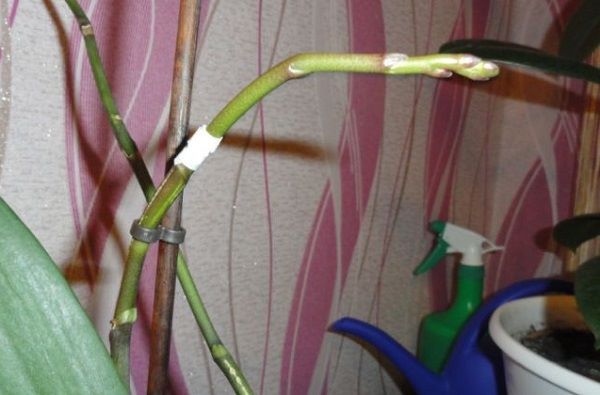

You can try to connect the parts of the peduncle with an adhesive plaster.
What is left in the hands or on the floor is put into water and then the beauty of flowers pleases its grower for a long time. They also do when the bush is overloaded with flower arrows and so that it does not deplete, part is cut off completely and placed in water so that the plants will delight their flowering separately from the main bush.
Preparing the container
It is convenient to keep the orchid mainly in a transparent container. This rule is suitable for all growing options, as well as for resuscitation of orchid roots in water. Florists are not advised to use glass vases for two reasons:
- Glass is considered a cold material for the orchid's root system.
- It is impossible to make holes for air circulation inside the roots and control of the water level.
Therefore, they use plastic pots, which can be purchased at a flower shop in different colors. You can use a standard transparent plastic bucket, which is hidden in a decorative planter. In the wall of such a pot, at the level of a quarter of its height, 3 holes with a diameter of 6 mm are made. To do this, use a heated soldering iron or screwdriver. Many clear plastic pots are already sold with holes on the sides.
A suitable container for growing an orchid should be in the shape of a glass. Before planting, it must be borne in mind that the plant should be located outside, and the roots inside the pot. The only exceptions are aerial roots, which can crawl out of the pot. This is a feature of the orchid.
Glass vases provide access to sunlight for the roots of the plant. But caring for an orchid in such vessels requires some experience, because it is impossible to make holes in them to drain water. Because of this, the roots of the flower become very waterlogged, which negatively affects their development.
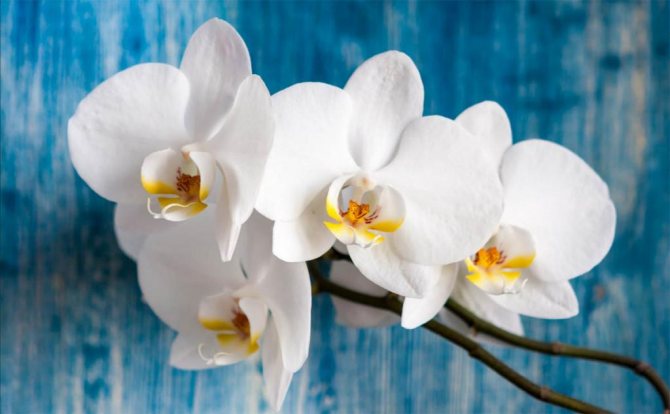

What kind of water do I use?
For long-term maintenance of orchids in water, flower growers advise using only filtered water at room temperature. Rainwater or water filtered through peat is also suitable.
It is not entirely true - to put the orchid immediately after purchase in tap water. There is a high probability that the roots will rot quickly. This is due to the fact that many cities use strong chemicals to purify water, and the liquid itself is filled with heavy metals, losing nutrients that are so important to the orchid.
This method is used strictly for fixing and propagating the roots. Today, there is only one variety that tolerates tap water well - "Wanda". These orchids can also be grown in a glass vase.
